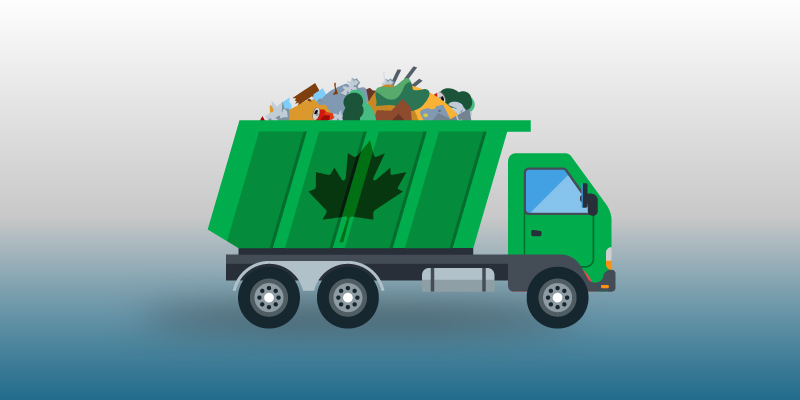Canadians generating less waste– despite growing economy

We often hear misleading statements about how Canada fares poorly when it comes to environmental performance. But many people might be surprised to learn that, contrary to common rhetoric, Canada’s environment is improving.
While past studies have shown improvements in our air and water quality, a new study looks at another environmental indicator—the generation of municipal solid waste (a.k.a. garbage or trash). Overall, the study found that, when we account for population and economic growth, two key drivers of waste generation, Canadians are generating less waste.
This is particularly important because as countries increase their population, wealth and prosperity, people tend to consume more resources and therefore waste generation is expected to increase.
However, the study found that Canadians went from generating 980 kilograms of solid waste per person in 2002 to 959 kilograms in 2018—a 2 per cent decrease. Again, while 2 per cent may seem like a modest decline, it’s within the context of a growing economy. For example, between 2002 and 2018, the economy grew by 50 per cent but total solid waste generation only increased by 16 per cent.
Interestingly, while per-person waste generation is declining in Canada, the sources of waste are changing. Specifically, household waste is on the rise and now comprises more than 40 per cent of total waste generated. On the other hand, waste generation from non-residential sources— industrial, commercial and institutional sources—has declined over the past two decades.
While most Canadian provinces have reduced per-person waste generation, progress varies. For example, Manitoba went from generating 962 kg of solid waste in 2002 to 891 kg in 2018—good for the largest per person reduction for any province at 9 per cent. On the other hand, New Brunswick saw the greatest increase (20 per cent), going from 726 kg of solid waste generated per person in 2002 to 872 kgs in 2018. And Albertans went from 924 kg in 2002 to 958 kg in 2018, a 4 per cent increase.
However, despite per-person waste generation being a key metric to assess the state of solid waste, it does not account for economic growth. Solid waste generation intensity, which refers to the amount of solid waste generated for every $1 million of GDP produced, captures the relationship between waste generation and economic growth, and provides a more accurate comparison across provinces and time periods.
In 2002, Canadians produced nearly 29 tonnes of solid waste per $1 million of GDP compared to 22 tonnes in 2018, a significant 23 per cent reduction. The fact that waste generation has risen at a much slower rate compared to economic activity suggests that Canada has somewhat “decoupled” waste generation from economic growth, which is great news for the environment as it means we’re becoming more efficient in the consumption of our resources.
Without exception, all provinces reduced the level of solid waste generation intensity since 2002. In other words, waste generation didn’t grow in step with overall economic growth. The most notable reductions came from British Columbia (28 per cent), Manitoba (27 per cent) and Newfoundland and Labrador (25 per cent).
Overall, sound and efficient use of natural resources remains an important part of sustainable development. Canada’s progress in reducing per-person waste generation, paired with partial economic growth decoupling, speaks volumes to our stellar environmental performance and builds on our already impressive track record.
Authors:
Subscribe to the Fraser Institute
Get the latest news from the Fraser Institute on the latest research studies, news and events.


